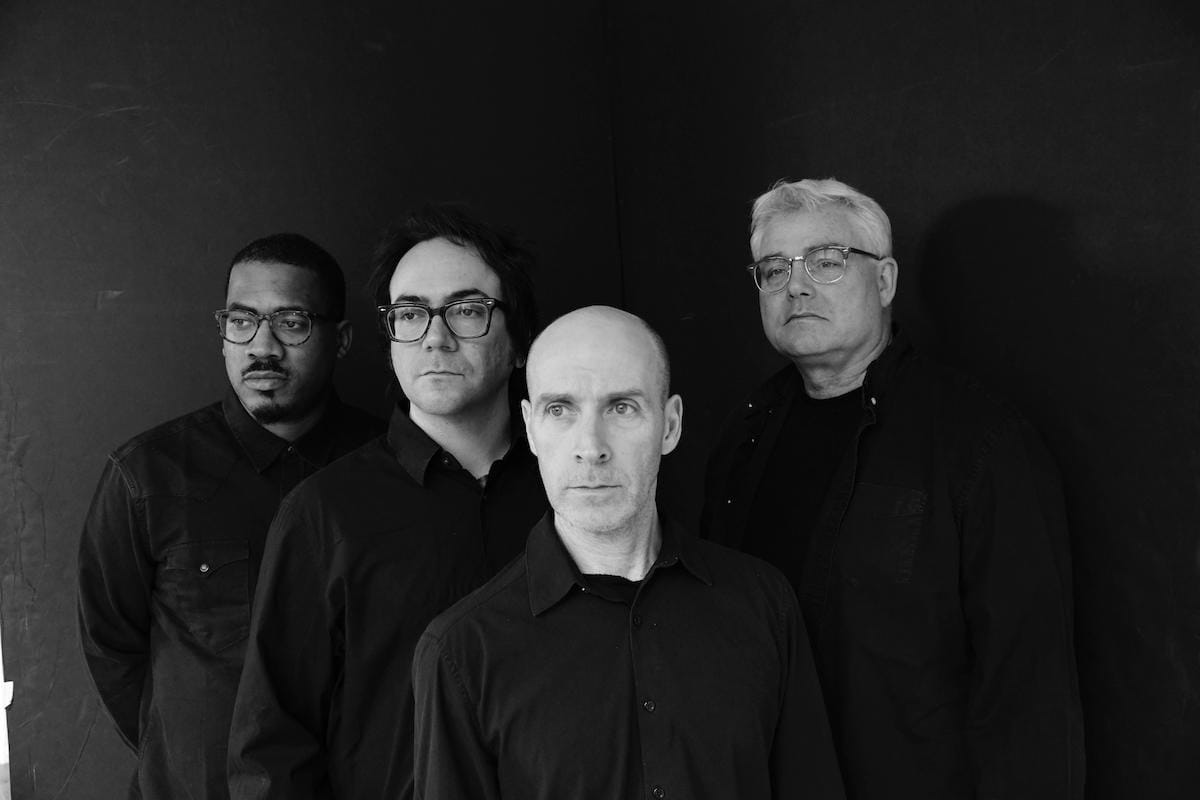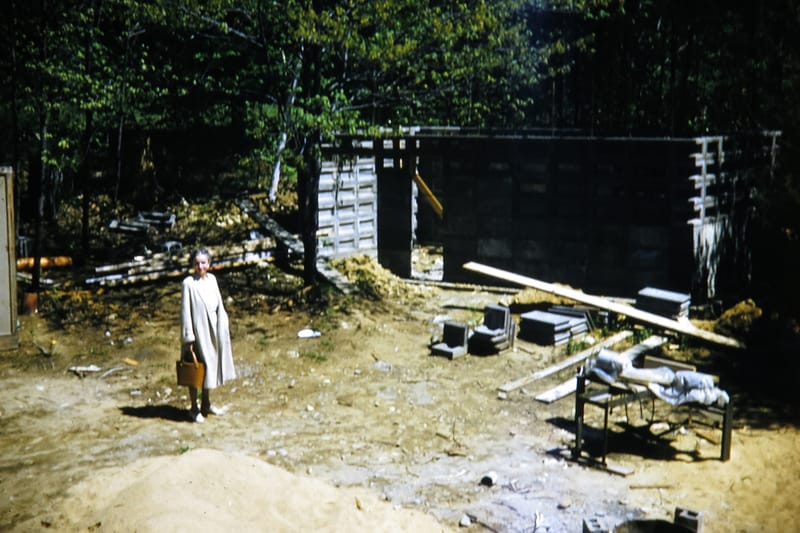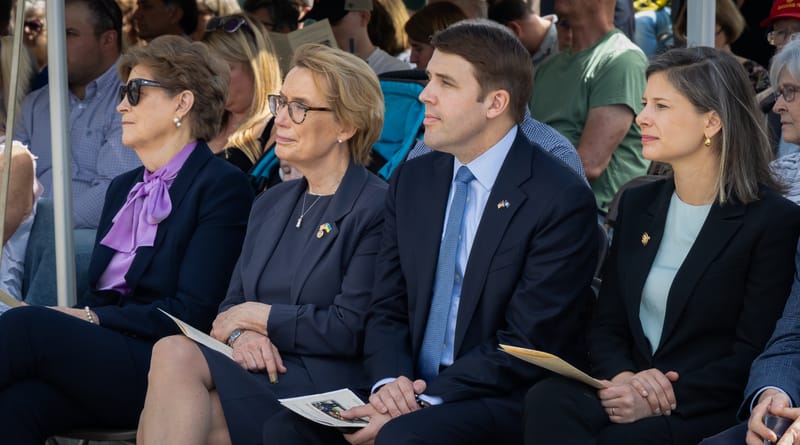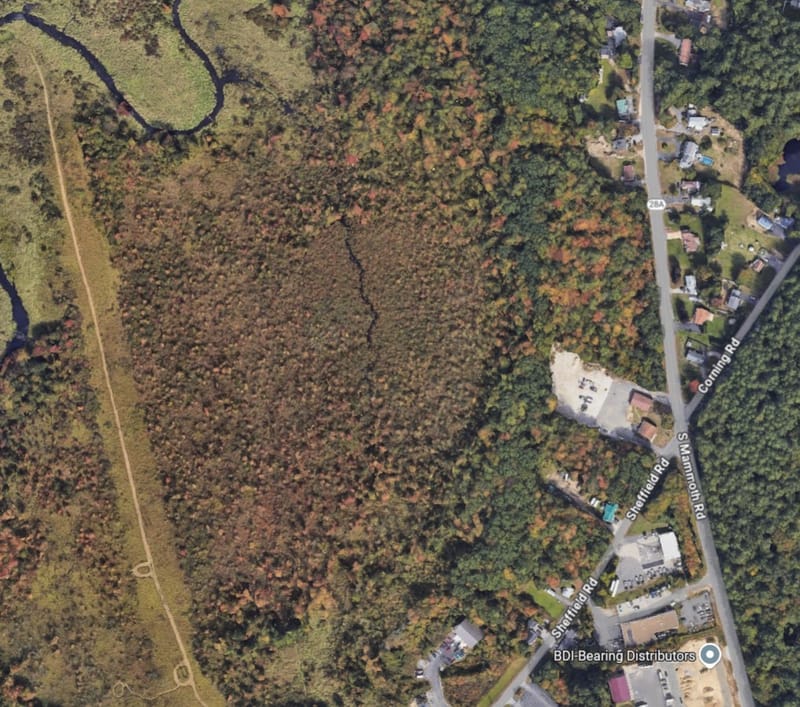The Messthetics & James Brandon Lewis bring their brand of punk-jazz to The Thing in the Spring at Nova Arts
Starting in 2008 with its initial location being within various venues in downtown Peterborough, The Thing In The Spring is a festival that combines live music, visual art and other aspects to create an extraordinary experience. Over the past couple of years, the festival has made its home at Nova A



Starting in 2008 with its initial location being within various venues in downtown Peterborough, The Thing In The Spring is a festival that combines live music, visual art and other aspects to create an extraordinary experience. Over the past couple of years, the festival has made its home at Nova Arts in Keene, with its next edition happening from May 16 to May 19.
There are several acts performing on both an indoor stage and an outdoor stage, which includes the indie rocker Jake McKelvie, multi-genre guitar savant Marc Ribot and his band Ceramic Dog, alternative hip hop artist Prefuse 73, post-Americana act The Huntress and Holder of Hands and post-rock pioneers Earth. There’s also going to be a poetry showcase, a bird walk and a release party for a rock poster book from the singer-songwriter and visual artist Dan Blakeslee. Going back to the music, another band that’s going to be taking part is The Messthetics, which features the Fugazi rhythm section of Joe Lally on bass and Brendan Canty on drums, who will be joined by saxophonist James Brandon Lewis.
Their upcoming performance that will be closing out the second day of The Thing In The Spring on the outdoor stage at 9:15 p.m. is part of a tour in support of their self-titled album that came out on March 15 via Impulse! Records. I had a talk with guitarist Anthony Pirog, Canty and Lewis about how this collaboration came to be along with their thoughts on the recording process and being part of the festival.
IF YOU GO

The Thing In The Spring — NOVA ARTS
48 Emerald Street, Keene, NH

Rob Duguay: With The Messthetics being based in Washington, D.C., and James being based in New York City, how did you eventually get together to make this album?
James Brandon Lewis: Basically, Anthony and I met 10 years ago while playing with a man named William Hooker during his studio session. We enjoyed playing with each other, it was a vibe and over the years we’ve collaborated while playing various concerts and touring. In 2019, for Winter JazzFest [in New York City] he called me and asked if I wanted to play with Brendan and Joe in The Messthetics. I said “Of course”, we rocked the show and then after that we played more shows. I think we played at The Bell House [in Brooklyn] twice, we did a show at Union Pool [there as well] and then we recorded a track for one of my records that came out last year, which is “Eye of I”.
That came out and then everything was going as well as we thought it was going to go from previous years of collaborating. We called each other and the next thing you know, they asked if I would be interested in recording with them and I said “Of course”. Coming down to D.C. isn’t a problem for me, I was an undergrad at Howard University and I have family members in the area, so that’s how that came about.
RD: The recording process at Tonal Park in Takoma Park, Maryland only took a couple days with engineer Don Godwin, so what was the catalyst for that part of the album taking such a short amount of time? Did you all go into the studio with an improvisational approach with only a few takes being needed or did you all do a ton of rehearsing beforehand in order to get everything down precisely?
Anthony Pirog: We worked out forms for the songs a couple months before as a trio, so we had a large part of the music written while leaving space open for James to add melodies and other sections. The music was also composed to highlight solos and improvisation, there was a form that we were playing with but we left it loose. We were able to do it so quickly because we were in that sweet spot while being prepared and being open to what was going to happen. We didn’t have any expectations going into the studio, once we were there we felt that things were happening very easily and quickly so we didn’t have to do take after take. We would do a take and go in and listen while seeing if we captured what we wanted to get and the whole process seemed kind of effortless.
Brendan Canty: Part of going into the studio when you have a good engineer like Don is that he somewhat becomes transparent in the process. He makes sure that he’s micing everything and he knows what he’s doing. We had James separated in another room that was pretty big with Don capturing a lot of the audio. He had multiple mics so he was getting big room tones of James’ horn, but the monitoring felt like we were standing right next to each other so he had his technical side down. He knows how to mic things but he also knows how to keep us in good communication with one another so the whole thing becomes somewhat effortless, which I think is something that sometimes gets overlooked.
Having a studio feel like you’re in a room together where you can actually communicate with one another is such a key aspect to the whole thing. That was something that made the whole session a lot easier and a lot more fluid and beautiful.
RD: It’s great that it came out that way.
BC: Yeah, I felt really lucky and it’s something that sometimes people overlook. It’s one thing to put everybody in an actual room together and you get all the communication, but you don’t get the isolated sounds. We wouldn’t be able to put room mics up to capture the horn, but having separate rooms in a place big enough like Tonal Park so we could actually mic all the different rooms but also have that level of communication is a big deal.
RD: From looking at their website, Tonal Park looks to be quite the complex. You mentioned how the place has all these separate rooms, but there’s even a radio station on the premises, so what was the overall experience like recording in a unique building like this? Did being in a completely different ambiance contribute to the vibe at all?
AP: I really don’t know what to add to what Brendan just said, but it’s just a really nice environment. The other thing was Don had the sounds sounding really great for playback so we could get enthusiastic about what we were doing. It wasn’t just when we were playing, but when we were listening back he really took the time to get our sound sounding right. With the sitelines and everything, it just made it easy. We had Joe’s amp on the other side of the building in one of the mastering rooms, it was far away.
My amps were isolated and James was in a room behind huge glass doors so we could see him with Joe, Brendan and I all being in the same group with headphones. It just felt like a good, comfortable situation and it’s a great studio.
RD: It looks like a pretty cool place to make a record.
BC: Yeah, they can do venue stuff, they have the radio station. Bob Boilen has actually become the head of that, so the radio station will probably get a little bit more exposure, WOWD is what it’s called. To what Anthony was saying about Don, he got the rough mixes up in a very natural way and so once he started playing those rough mixes back to us, we just fell in love with how the organic sounds were coming off the microphones. It just really felt good, we played towards those sounds and then we just kept all the way through it. We stayed with those sounds and that’s what you hear on the record, we didn’t mix it any further than that.
We mastered it, but otherwise we just spent a year trying to protect the thing that we loved.
RD: I think it sounds great and I love the quality of it. The Thing In The Spring happening at Nova Arts has a variety of different bands and musicians performing at it, so what are your thoughts going into it with being part of this one-of-a-kind festival that combines music with art and all of these different things?
BC: I’m excited about it. I like playing all sorts of festivals, but I do appreciate it when someone takes the time to make it as eclectic a festival as possible. I think people have really eclectic and diverse tastes on a very broad spectrum, everybody does. I don’t know a person who doesn’t listen to a little bit of this and a little bit of that while also loving art and everything else. There’s no reason to put everybody together and call it a garage festival or a jazz festival, let’s just use some creative programming and keep everyone co-mingling. That’s what I’m into.
RD: I have a similar sentiment when it comes to festivals. How have you guys gone about converting the music from the new album into your live performance?
AP: It’s not that difficult because most of it was played live in the studio. When we were in the studio, like I said, we had an idea of the length of solos and certain sections that we can play around with in situations while interacting a little bit more. When you’re performing a live show, you play off of a lot of energy in the group and all the crowd, which is not always the easiest thing to capture on a recording. That’s one of the things I’m most proud of with this record, I feel like we really captured the feeling of us playing live together as a band without losing any of the space the instruments need to take to support whatever their role is at the given time. We’ve done a lot of touring already and everybody is really happy with the results of playing together so we’re just going to get out there and do our thing.





